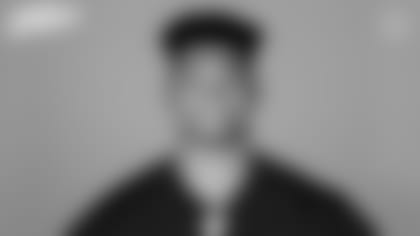Let's get to it:
DAVE STARCHER FROM BUTLER, PA: When the Steelers won the coin flip that gave them the No. 1 overall pick in the 1970 NFL Draft that became Terry Bradshaw, can you detail who flipped the coin? Who made the call of heads or tails? And how the coin landed? Who would have been in attendance for this and where was it done?
ANSWER: The first thing to understand is that in 1970 the NFL Draft was barely a blip in the business of sports, as opposed to today's intense coverage and interest in an event that's broadcast live to a worldwide audience and attracts enough fans to make it a viable and sought-after traveling road show. Anyway, back then, ties in the draft order were broken by a coin toss rather than the current system tied to record and strength of schedule, and since the 1969 Steelers and 1969 Chicago Bears both finished 1-13, tied for the worst record in the league, there had to be a coin toss. The winner got the No. 1 overall pick in the ensuing draft.
And it's also worth noting that the actual date of the NFL Draft in 1970 was Jan. 27, and the regular season ended on Dec. 21 – for the Steelers that end came after blowing a 14-0 lead to a 4-9 New Orleans team in a 27-24 defeat. In 1969, both the Steelers and the Bears were bad teams, and one of the ironies is that Steelers Founder Art Rooney Sr. had been coming out on the short end vs. Chicago Bears Founder George Halas for decades, and he was about to snap a streak in a way that changed the course of his franchise's history.
On Jan. 9, two days before Super Bowl IV, which would be played on Jan. 11 in Tulane Stadium in New Orleans, Dan Rooney and Ed McCaskey met in a hotel ballroom, along with NFL Commissioner Pete Rozelle serving in the role of flipper. Because Art Rooney always said that when flipping coins, you let the other guy call it because then the pressure is on him to make the correct call, Dan Rooney said to McCaskey, "Go ahead, you call it." McCaskey called heads, the coin came up tails, and the Steelers won the right to make the first overall pick in that draft. The Steelers picked the quarterback from Louisiana Tech. The Bears traded the No. 2 overall pick to Green Bay, which took Notre Dame defensive tackle Mike McCoy, who played eight seasons with the Packers, Raiders, and New York Giants.
- Download and listen to the Ask & Answered Podcast here: Apple Podcast | Spotify
BILLY LAVERDURE FROM FARGO, ND; It seems as though Ben Roethlisberger and Antonio Brown didn't have much of a relationship off the field, but such a great combination on the field. Do you see Russell Wilson or Justin Fields being a more personable teammate than Big Ben?
ANSWER: If there was any friction between Ben Roethlisberger and Antonio Brown either on the field or off the field that caused a strained relationship, I believe it would have been Brown's doing.
PERCEVAL SONDAG FROM DOYLESTOWN, PA: Some placekickers and quarterbacks are seemingly only signed to be a second leg or a fourth arm during the offseason and subsequent preseason. The signing bonuses these guys get tend to be quite small, and they are almost guaranteed not to get a regular paycheck during the regular season. I can see the benefits for the team. But for the player, what is their incentive for accepting such a situation?
ANSWER: These down-the-depth-chart placekickers, quarterbacks, or players at any other position can seek the best deal a team is willing to give. If the best they can do is a tryout for a spot on the training camp roster, or a spot on a training camp roster to compete for something better by standing out during the preseason, they then have two choices: Accept the opportunity and give it their best shot, or look for work in a different profession. Professional sports is a meritocracy, and the competition for a spot is fierce. A fourth-arm-guy on one roster might be an emergency No. 3 on another team's roster, and so it behooves Mr. Fourth Arm to give it his best, because everything he does is gonna be on video. And each of the other 31 teams have a lot of devices where their people can study video.
JOHN WASHINSKY FROM CLEMMONS, NC: On draft day, how do teams communicate offers to other teams? Do team representatives bargain by sending notes and making phone calls, or is it computerized? I would imagine with every trade, the situation can change quickly. What would happen if the team wasn't ready to make a decision?
ANSWER: I'll start with the last question first: If a team isn't ready to make a decision when it's time to be made, then there is no trade. Chalk it up to a missed opportunity. In the case of trades done on the three days of the NFL Draft, understand that a lot of legwork and telephone time has been spent gauging which teams might be interested in doing business and also what kind of business might interest them. Then there's a phone in each team's draft room, and that phone has a number that's circulated on a strict need-to-know basis. It's not used to order out for pizza.
JOHN RISTWAY FROM MT. PLEASANT, PA: Do you think the Steelers have a higher opinion of Dan Moore Jr. than most of the NFL and Steelers Nation? He seems like a real nice guy, but he doesn't seem very efficient at protecting the quarterback's blind side? Does the Steelers opinion of him preclude the drafting of an early round offensive tackle?
ANSWER: First of all, the opinion of "Steelers Nation" regarding any player, in this case Dan Moore Jr., doesn't matter a lick. Sorry, but it just doesn't. No disrespect intended, but the business absolutely cannot be run that way. Then moving on, I suspect your opinion of Moore's play is based upon snippets on social media, or Pro Football Focus "analysis," or from the opinions of people in the media who are paid to have opinions that don't necessarily have to be correct or even well-researched. Personally, I don't have the football expertise to study video and grade an individual player's performance and determine his ability to be the kind of player a team "can win with," but let me make this point: The Steelers' starting left tackle in Super Bowl XXX was John Jackson, and their starting left tackle in Super Bowl XLV was Jonathan Scott. Based on their years of service in the league, and their absence from postseason individual honors during their respective careers, I believe it's fair to refer to Jackson and Scott as journeymen. But that label still can be deserving of an NFL roster spot, and then maybe a journeyman can be part of a winning outfit while on those rosters. Dan Moore Jr. is the same kind of player as Jackson and Scott. Not an all-star but certainly worthy of a roster spot and a role within that roster. Based on numbers alone, that makes him one-in-a-million when it comes to people who want to have an NFL career vs. those who actually do. Finally, I do not believe Moore's presence on this roster would preclude the Steelers from spending an early-round draft pick on an offensive tackle.
KWEKU HAYFORD FROM ROCKVILLE, MD: What will Arthur Smith's offense consist of for the Steelers with Russell Wilson at quarterback? Before Wilson, we heard all sorts of things about it, from multiple tight ends, run heavy with some deep shots, tailored to the individual quarterbacks. Now that we know the quarterback, what is the style?
ANSWER: The Steelers style of offense under new coordinator Arthur Smith might be some of those things, all of those things, or none of those things. Successful coordinators in the NFL are not bound by a strict set of parameters, or even by what has worked in the past for them during their previous stints around the league. Give Smith some time to become familiar with what this personnel is capable of executing, what the roster is going to look like once it gets to training camp, what the list of opponents might be at the start of the regular season, and what those opposing defenses might be capable or incapable of executing. And what the offense looks like in September could be vastly different than what it looks like at Thanksgiving. It should be growing and evolving all the time, because a team with a strict "identity" is actually a team providing the opponent with a blueprint.
SEAN DELANEY FROM GARDNER, MA: Regarding the players the Steelers bring in before the draft, what kind of information can the team get on these visits that would not be readily available at the Combine, at a Pro Day, or from scouting reports? I'm interested in how they determine the 30 players they invite before the draft.
ANSWER: You have to understand that this draft business is a long process. Meetings at the Combine last just 15 minutes. There can be a limited amount of time for a face-to-face during a Pro Day. And as scouting reports are read and discussed and compared, there could be things the team wants to investigate/explore further with a player. The team can put a prospect on the whiteboard and delve deeper into his football IQ during a pre-draft visit. The team might opt for some one-on-one time with the position coach or the coordinator. Those visits can last for a full work day. That visit allows for the potential of a lot more information and insight that can be added to the overall "grade" of the player.
BRYCE KYBURZ FROM AUSTIN, TX: I was looking over RAS scores for draftees and noticed that Frank Crum, a tackle from Wyoming, has the third highest RAS of all tackles, but he is projected to be a late-round pick or an undrafted free agent. Can you explain how a player can have an incredible RAS but have such a low draft projection?
ANSWER: Let me begin by offering this from yahoo.sports.com: "Relative Athletic Score (RAS) is a metric that combines the various categories measured at the NFL Combine – height, weight, wingspan, drill exercises – into one aggregate number that's then contextualized against other athletes of the same position. RAS is the brainchild of Kent Lee Platte, a 'lifelong Detroit Lions fan who also has a passion for math and metrics in general.'"
Based on that, my initial thought is a player might indeed have a high RAS score, but teams will be looking to draft football players, not decathletes. There are countless stories of players who smoked the NFL Combine but did not deserve to be drafted as they were (see: Mike Mamula, Boston College, 1995 NFL Draft, as one example). I don't know anything about Frank Crum, a tackle from Wyoming, but if he ends up being a late-round pick or an undrafted free agent, it will be because that's how he was evaluated as an overall prospect by the 32 teams. Finding the answer to the process of identifying and acquiring the football talent to assemble a winning football team isn't going to come at the other end of a math equation.













